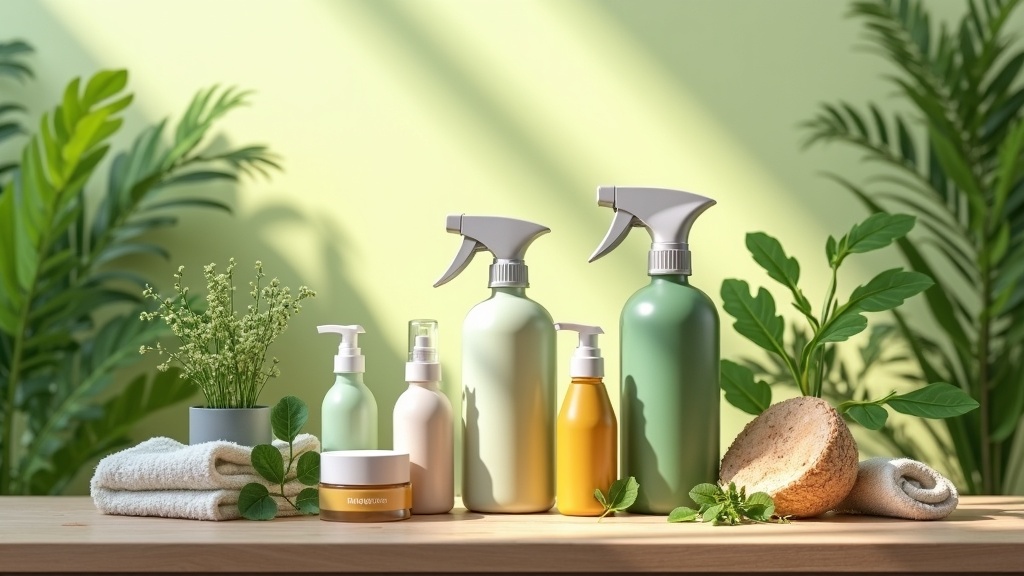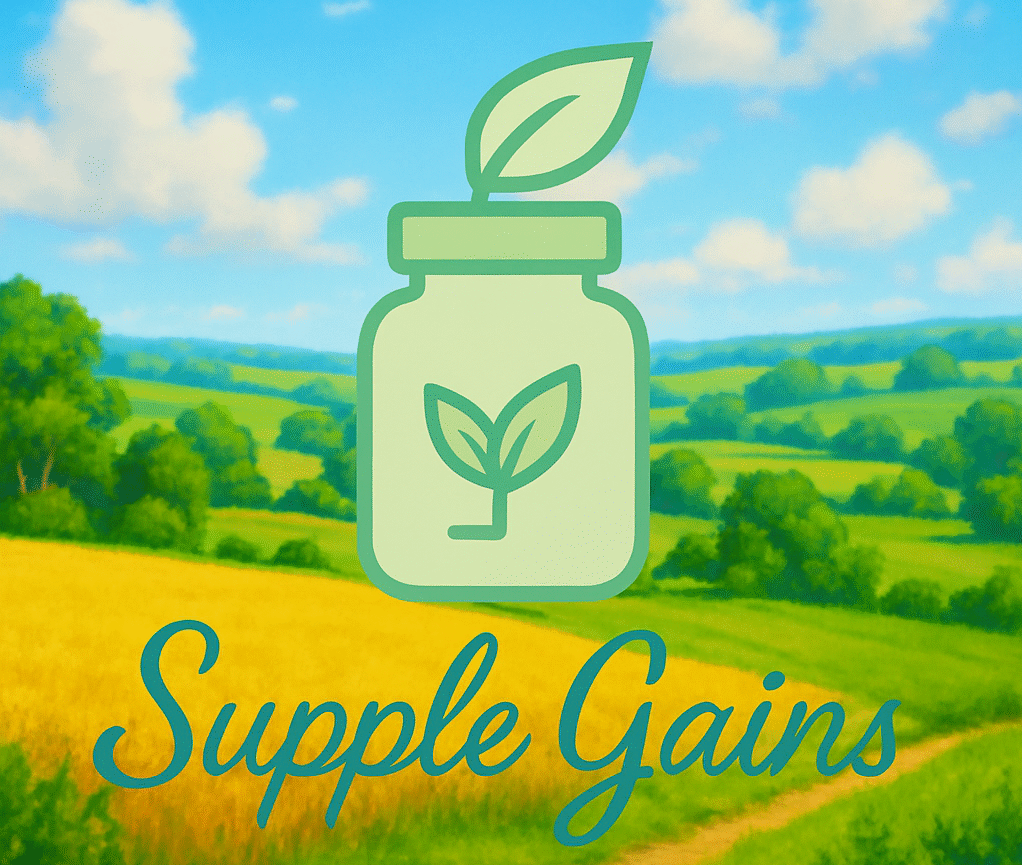Ecofriendly plantbased cleaning products are getting a lot of love lately, and for good reason.
Removing harsh chemicals from everyday cleaning routines helps protect your health and brings some real benefits to the planet.
If you’re thinking about swapping out your regular cleaners for more natural, plantbased options, there’s plenty to look forward to, and a few things to keep in mind.
Here’s a chance to get into why these cleaners are worth checking out, tips for choosing the best ones, and ways to make them work even better around your home.

What Makes PlantBased Cleaning Products Ecofriendly?
Unlike traditional cleaners packed with synthetic chemicals, plantbased products rely on natural ingredients like essential oils, soap nuts, citric acid, and coconutbased surfactants.
Most are biodegradable, which means they break down faster and more safely in the environment.
That’s a big deal.
Many conventional cleaners can add to water pollution and hurt wildlife over time.
Packaging matters, too.
Many plantbased cleaners come in recyclable bottles or even refillable containers, cutting way down on waste.
When I first tried plantbased cleaners, I noticed brands putting a major focus on better packaging—using glass bottles, compostable materials, and minimal plastics.
This nod to sustainability shows the bigger picture.
Ecofriendly choices matter both inside and outside the bottle.
Why Switch to Ecofriendly PlantBased Cleaning?
Conventional cleaners get the job done, but strong scents and harsh stuff can irritate skin, eyes, and lungs.
Plantbased cleaners use milder ingredients, so they’re a lot nicer for sensitive folks (and pets, too).
Some people think “natural” means weaker, but modern plantbased formulas can take on grease and scum right alongside their chemicalfilled rivals.
- Improved Indoor Air Quality: Plantbased cleaners usually leave fewer fumes and allergens in the air, leading to fresher, cleaner spaces, minus that weird chemical aftertaste.
- Less Risk of Toxic BuildUp: Naturally derived ingredients don’t leave dangerous residues on surfaces, which is huge in kitchens and kids’ rooms.
- Animal Friendly: Most ecofriendly companies skip animalbased ingredients and do not test on animals. If you’re vegan or just shopping with more care, you’ve got tons of options.
- Safe for Septic Systems: Plantbased cleaners usually do not harm septic tanks, making them a solid bet for offgrid homes and rural spots.
Types of Ecofriendly PlantBased Cleaning Products
The world of plantbased cleaners covers way more than an allpurpose spray. You’ll find a product for just about any cleaning task at home.
- AllPurpose Cleaners: The goto for counters, sinks, and general surfaces. Citrus extracts and vinegar are common favorite ingredients in these blends.
- Dishwashing Liquids: Easy on your hands but strong on grease. Usually, these have coconutderived surfactants and soothing aloe.
- Laundry Detergents: Many are super concentrated, saving on bottle space and packaging. Soap nuts, baking soda, and natural enzymes work hard for a deep clean.
- Bathroom and Glass Cleaners: These use plant acids and essential oils to tackle soap scum and water spots, and their scents aren’t overwhelming.
- Floor Cleaners: These cleaners are gentle for wood and stone, using mild surfactants that won’t strip off protective coatings.
Getting Started: How to Choose a PlantBased Cleaner
Picking the best cleaner can feel like a guessing game, especially with all the green buzzwords out there.
Here’s how I game plan the right choice:
- Ingredient Transparency: Stick with brands that spell out what’s in the bottle. The less mystery, the better. Spot familiar things like citric acid, decyl glucoside (corn/coconut origin), baking soda, and essential oils.
- ThirdParty Certifications: Seals from EPA Safer Choice, EcoLogo, or USDA BioPreferred show if a product holds up to its claims. Always a plus if you want some extra confidence.
- Packaging Practices: Refillable, recyclable, and lowplastic packaging is a win. Concentrates stretch farther and lower waste.
- Performance Reviews: Don’t just go for pretty packaging. Look up reviews from people with homes like yours; search for “streakfree” or “degunk” to spot the top options.
Simple Guide to Making Ecofriendly Cleaning Easy
Switching to ecofriendly cleaners gets much simpler with a few easy moves.
- Start With One Product: Just change out your allpurpose spray or dish soap first. That way, you can get comfortable bit by bit.
- Use Reusable Cleaning Cloths: Match up plantbased cleaners with rags instead of paper towels for a greener system.
- Test in Small Spots First: Try new products on one counter or table. Handy tip if you have stone or sensitive surfaces.
- Use It All Before It Expires: Many natural cleaners skip strong preservatives; use them up before the date on the bottle to get the best results.
- Check Labels For Pets and Kids: Even natural ingredients can irritate if spilled or swallowed. Keep them locked safely away and read all safety notes for peace of mind.
Common Challenges and Fixes for PlantBased Cleaners
Anyone trying greener cleaners runs into a few bumps.
Here’s what to watch for, and how to work around:
- Residue on Glass: Sometimes you see streaks after using plantbased cleaners. Buff with a microfiber cloth or reach for vinegar blends to clear things up.
- Tough Stains: Grease and setin mess might need extra time. Let your cleaner sit for a bit, or add a shake of baking soda to boost results.
- Scent Preferences: Essential oils bring earthy, herbal, or citrus smells. If the scent is too much, just dilute it or open a window while cleaning.
- Cost: Ecofriendly items are sometimes a little pricier. Look for concentrates and bulk refills; even simple blends like vinegar and water save money.
RealWorld Troubleshooting
I once gave a new ecofriendly brand a try on glass shower doors.
At first, a cloudy film stuck around, but a quick wipe down before air drying (and a second pass with a dry cloth) left the doors sparkling.
You learn your cleaner’s sweet spot as you go.
Playing around with application and wipe time saves some head scratching.
How to Read Labels and Avoid Greenwashing
Not every “green” cleaner is the real deal.
Some companies go for earthtoned labels but still use synthetic fragrances or preservatives.
Here’s how you can spot the honest ones:
- Check Ingredient Lists: Real plantbased cleaners mostly show stuff you know. Too many hardtopronounce names? Could be some hidden chemicals.
- Watch the “Fragrance” Label: If it just says “natural fragrance,” dig deeper—real essential oils are better than vague “fragrance” types.
- Check Packaging Details: Sometimes, only part of a bottle is recyclable. Read the details, or check their website, to cut down your trash footprint.
Fun and Surprising Uses for Ecofriendly Cleaners
Ecofriendly cleaning products go way past just surfaces.
Many options are gentle enough for washing produce, lifting stains from clothes, or even freshening up rugs and pet bedding.
If you have allergies, scentfree lines are lifesavers.
Citrus sprays especially work magic on sticky countertops, while lavender picks are my go-to for winding the day down—they’re calm but never overwhelming.
- MultiUse Wonders: Concentrated allpurpose options can be mixed down for mopping, tucked into spray bottles, or even work as a quick hand soap.
- Garden Friendly: Some outdoor cleaners are safe around veggies and flowers, so there’s less worry about hurting plants.
- Great for Travel: Refillable tiny bottles let you keep your ecofriendly favorite close, whether on a trip or at a campsite.
Popular Questions about PlantBased Cleaners
Here are some things people often want to know about plantbased and ecofriendly cleaning products:
How well do plantbased cleaners work?
Modern plantbased formulas do just as well as most chemical options for everyday messes, if you match the right cleaner to the job.
Are they safe for kids and pets?
Most plantbased cleaners avoid harsh chemicals.
Still, keep them up high and check ingredients for anything your family might react to.
What about allergies or sensitivities?
Search out scentfree or hypoallergenic options.
These are easy to find nowadays in natural cleaning lines.
Can I make my own at home?
Definitely!
With vinegar, baking soda, water, and lemon, you can mix up cheap solutions for almost any cleaning spot.
Wrapping Up
Switching to ecofriendly plantbased cleaning means safer air, healthier spaces, and a happier Earth.
With so many options—and some nextlevel cool new products and companies—the leap to greener routines is easier than ever.
Watch what goes into your products, stick with trustworthy labels, share tips with friends, and making sustainable cleaning an everyday thing just feels right.
Your home will shine, your conscience will be clear, and the planet will thank you every time you clean up.
